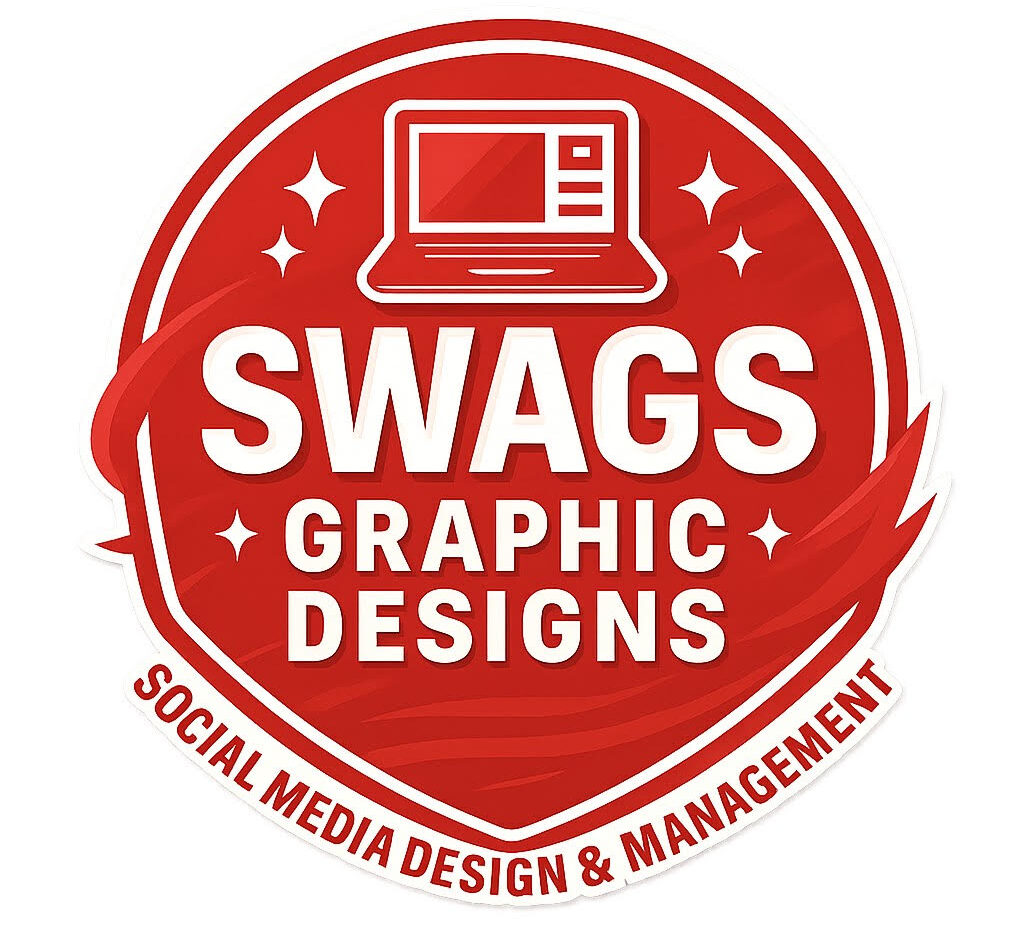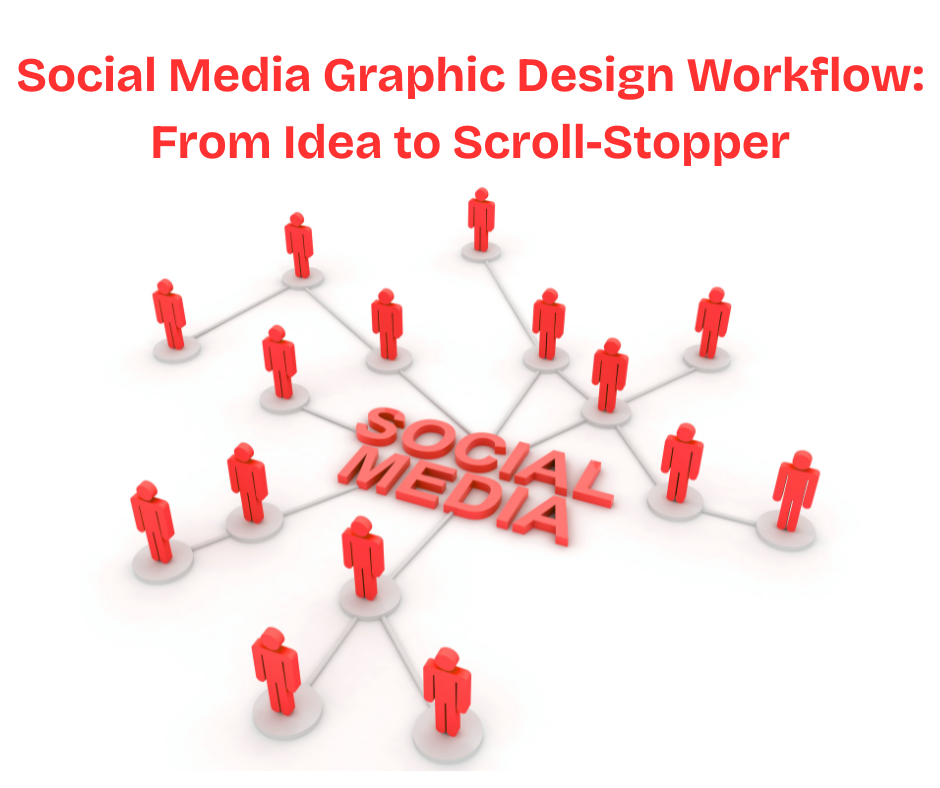If you want to make your social posts impossible to scroll past, dialing in your graphic design workflow is super important. From brainstorming concepts to piecing together those eye-catching visuals, every stage shapes how your brand shows up online. I’m walking through my own step-by-step process to take an idea and turn it into that “wow, who made that?!” moment on any feed.
Understanding the Basics of Social Media Graphic Design Workflow
Graphic design for social media runs on a bit of a different rhythm compared to traditional print or website design. The visuals must grab attention right away and communicate your message even if someone only glances for a second. Knowing how each stage of the workflow builds on the last can be pretty handy. Here’s a quick breakdown of the key stages:
- Ideation: Coming up with concepts that fit your goals or campaign. This is where the creative spark happens and ideas start to come together.
- Planning: Everything from choosing the right format (post, story, reel cover, ad, etc.) to setting the core message, colors, and fonts.
- Design: Laying out graphics using your chosen tools, usually a mix of images, illustrations, text, and branded elements.
- Review & Feedback: Getting a second or third pair of eyes to catch typos, improve visuals, and make sure the message lands.
- Export & Scheduling: Exporting for the correct platform specs and scheduling the post for ideal engagement.
Brainstorming and Coming Up With Graphics Concepts
I always start with a brainstorming session. Quick sketches, color swatches, and moodboards help shape ideas into something visual. Checking out current trends, brand values, and what’s resonating with my target audience keeps my ideas sharp and on-point. Getting inspiration from other designers can spark new creative avenues too.
- Reference Your Brand Kit: Having logos, colors, and fonts ready saves plenty of time.
- Look for Inspiration: Pinterest boards or Instagram “saves” folders are great for finding style ideas or layouts.
- Consider the Platform: Different channels need different vibes. For example, bold text and high contrast work well on TikTok, while a sleek, clean story fits Instagram or Facebook. Each platform can reach a different audience, so tailor accordingly.
Tools like Canva, Milanote, or even a simple Google Doc help organize concepts and feedback before getting into the real work. Sometimes, collaborating with a friend for feedback can help spot something you missed or push your ideas further.
Building an Efficient Design Process
An organized workflow can either make or break your consistency. Here’s the core routine I use for almost every post or campaign:
- Create a Template: Set up base templates for each social channel. This shortcut keeps things on-brand and ready to go, whether you’re designing a story, a square post, or a horizontal header.
- Gather Assets: Get all your photos, icons, backgrounds, and fonts gathered in one spot before you start laying things out. This alone speeds things up and sparks new layout ideas.
- Sketch or Wireframe: A quick rough draft—even on paper—helps settle the layout and text hierarchy before building in your design software. Sometimes a hand-drawn sketch reveals something you wouldn’t spot on-screen.
- Design in Iterations: I usually work in passes. First, I block out major elements, then add details, adjust colors, and finally fine-tune text and overlays.
- Document Feedback: Use sticky notes, Google Docs, or Trello to collect feedback and tweak revisions rather than losing details in endless email threads.
Design Principles That Make Graphics Pop
Great graphics aren’t always about flashy effects. They’re about clarity and appeal. Here’s what I look for every time:
- Bold Contrast and Colors: High-contrast designs stand out on busy feeds. Vibrant colors, clear background separation, and easy-to-read text ensure nothing fades into the background.
- Hierarchy Matters: Make sure your main message grabs attention first. Details should flow naturally and never overwhelm.
- Use of Space: Enough white space keeps graphics feeling open and modern, and prevents clutter. Space can help draw eyes to key details.
- Consistency: Keeping styles similar across posts helps build brand recognition and a professional look, even if content changes every week.
- Animation (If Needed): Subtle movement or animated GIF elements are great for stories and ads, but they should never distract from your key message.
Optimizing for Platforms and File Types
Every social network has different size and format requirements. Posting the wrong image size can blur your work or crop out important details. Here’s how I keep things looking sharp for each channel:
- Instagram: Square (1080×1080 px) or portrait (1080×1350 px) for feed, and vertical (1080×1920 px) for stories and reels.
- Facebook: Square (1200×1200 px) for posts, horizontal (1200×630 px) for links, and 1080×1920 px for stories.
- X (Twitter): Horizontal (1600×900 px) for best display and smooth mobile/desktop crossover.
- LinkedIn: Horizontal (1200×627 px) for posts and ads so content looks polished and professional.
Export your designs using high-quality .jpg or .png files and keep animated graphics in .mp4 or .gif (when compatible). Double-check file weight to make sure uploads are quick and keep quality high by avoiding excessive compression.
Common Hurdles and How I Tackle Them
Designing for social media always brings a unique set of curveballs. Here are a few issues that pop up regularly and how I deal with them:
- Tight Deadlines: Templates, asset libraries, and batching designs ahead of time help speed things up.
- Multiple Platforms: Keeping templates labeled and organized makes it easier to resize or adjust graphics for each network without a lot of rework.
- Feedback Loops: Get feedback early, and keep edits tracked. Tools like Figma or Google Drive make sharing and updating assets a breeze.
- Creative Block: Take a step away from the screen, browse trending hashtags or design sites, or ask for ideas from a friend or coworker.
Template Overload
Templates can cut both ways. While they help keep things quick and on-brand, reusing the exact same layout too often makes your feed look stale. I mix things up every few weeks by swapping background photos, icon styles, or mixing in seasonal colors to keep things fresh without starting from scratch every time.
Color and Accessibility
Social media reaches all kinds of people, so making graphics accessible—good contrast, readable fonts, alt text for visually impaired users—should always be a priority. Online accessibility checkers are really helpful when I’m unsure if a color palette is readable enough.
Frequently Asked Questions
These come up a lot with new designers and small business owners hoping to boost their social feeds:
Question: What’s the easiest way to design fast for multiple platforms?
Answer: Build standard templates for each channel, then switch images and tweak text. Batch design similar posts at once for big time savings.
Question: How many design tools do I really need?
Answer: One all-in-one app like Canva can handle most posts, but having Photoshop or Illustrator for special projects is handy. Stick to tools you know well — new tech isn’t always faster.
Question: How do I stay consistent with my brand style?
Answer: Keep a simple brand kit file with your fonts, colors, and key assets. Reference it every time, update it as your brand changes, and guard it like gold!
Wrapping Up
A smart workflow for social media graphic design can really help, whether you’re a freelancer, small business, or building your own personal brand. Organizing your process clears out headaches, frees up time for creativity, and helps your posts get noticed in a crowded feed. With a few favorite tools, a dash of experimentation, and steady review of your analytics, your socials will start turning heads. Before you know it, your feeds might be the ones others look to for inspiration.

